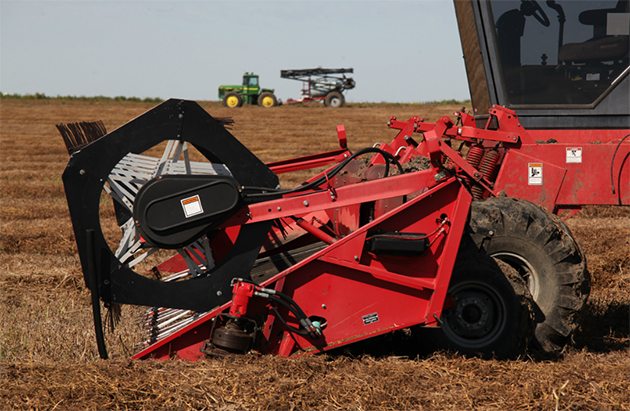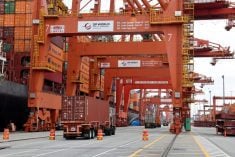
Winnipeg, Aug. 19 – Large crops are in Western Canadian farmers’ fields ahead of this year’s harvest, but just how big remains to be seen as industry participants await Statistics Canada’s first survey results of the crop year set for release on Aug. 23.
Pre-report trade estimates on canola production range from 16 million to 20 million tonnes, with the majority of guesses coming in at moe than 18 million tonnes. That compares with the 17.231 million tonnes grown in 2015-16. Earlier in the growing season, some analysts had tossed out numbers of more than 22 million.
Read Also

Canadian trade data delayed by U.S. government shutdown
Canadian international trade data for September will be delayed indefinitely due to the ongoing partial shutdown of the United States government, Statistics Canada said Friday, Oct. 24.
“What we’re seeing here is a repeat of 2013,” said Jerry Klassen, manager of the Canadian office of Swiss-base GAP Grains and Products in Winnipeg, referring to the record large crops grown that year.
“Fertilizer was cheap this spring, so they just poured it on,” said Klassen.
With harvest operations in the early stages, he added that excellent yields were being reported for most of the main crops, “with the caveat being peas and lentils.”
StatsCan is typically known for being conservative in its August report, with upward revisions common in subsequent reports, said Klassen.
However, some industry participants are of the opinion that actual production might end up below the Aug 23 estimate, as the survey was conducted in late July before excessive rain, hail and strong wind caused problems in some areas of the Prairies.
Neil Townsend, market analyst with FarmLink Marketing Solutions, said his company was scaling back its estimates due to weather events.
“There are still very large crops, but not as large as they were at one time.”
However, Townsend acknowledged the tendency for StatsCan to revise estimates higher, adding “I’ll take a wait and see approach.”
For wheat, pre-report estimates range from 28.5 million to 32.0 million tonnes (spring, winter, and durum combined), that compares with the 27.594 million tonnes grown in 2015.
Of that total, durum estimates range from about 6.2 million to 8.5 million tonnes. Canada grew 5.389 million tonnes of durum in 2015.
While wheat production will likely be up on the year, Townsend said quality issues may limit how much of the crop hits the top grades.
“There are some concerns with disease issues in the cereal grains,” added Klassen. Those issues “will be offset with the larger yield estimates,” he said.
Barley production is forecast from 8.0 million to 9.5 million tonnes, which compares with 8.226 million 2015-16.
Peas and lentils both saw sizeable increases in planted area on the year. While trade guesses are still pointing to record large Canadian pulse production, the excess moisture and flooding in the major growing areas cut into the overall potential.
Trade estimates on the size of the pea crop range from about 4.0 million to 5.0 million tonnes, which compares with 3.201 million the previous year. Lentil production is pegged at 3.0 million to 4.0 million tonnes, up from 2.373 million in 2015.
The following is a summary of the pre-report estimates ahead of the Aug. 23, Statistics Canada production report. Production in million tonnes.
| Trade estimates 2016 | 2015-16 | |
| All wheat | 28.50-32.00 | 27.59 |
| Durum | 6.20-8.50 | 5.39 |
| Barley | 8.00-9.50 | 8.23 |
| Oats | 3.10-3.90 | 3.43 |
| Canola | 15.90-20.00 | 17.23 |
| Flax | 0.50-0.65 | 0.94 |
| Peas | 4.00-5.00 | 3.20 |
| Lentils | 3.00-4.00 | 2.37 |














